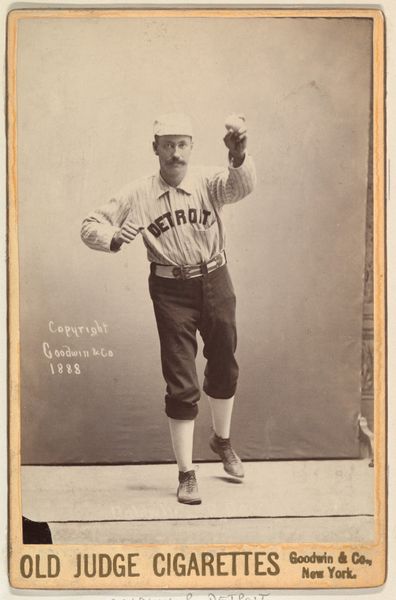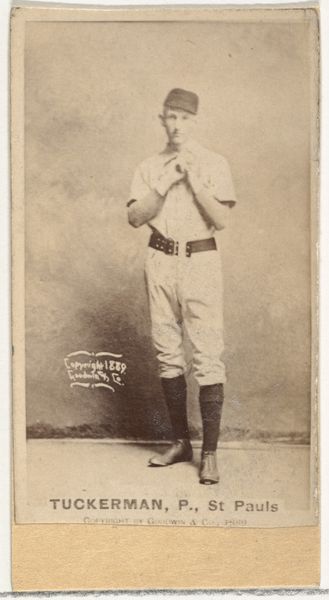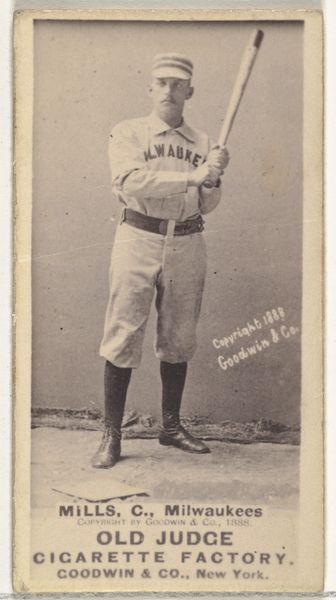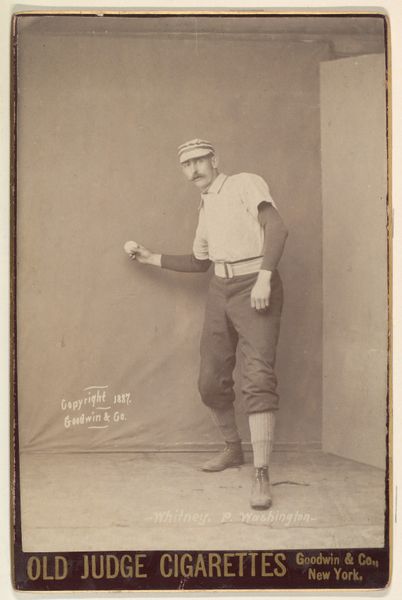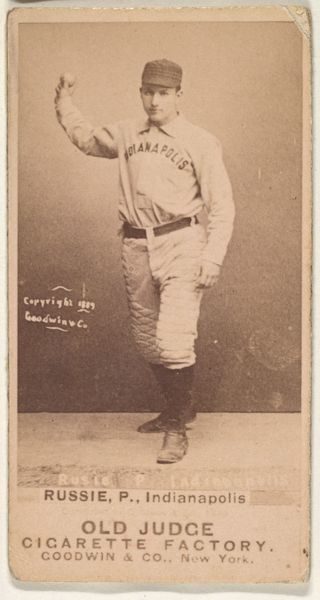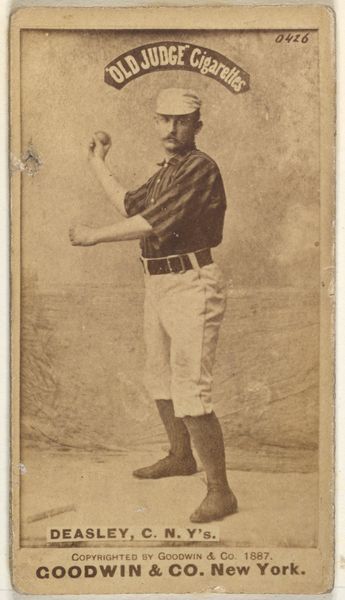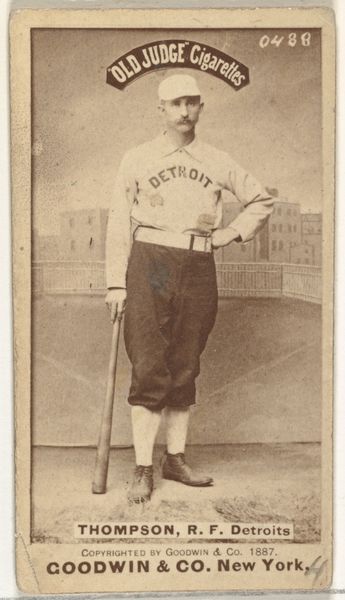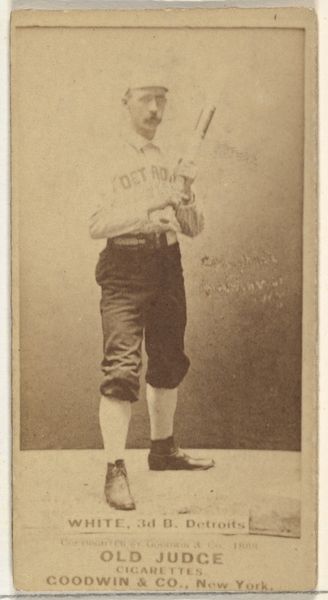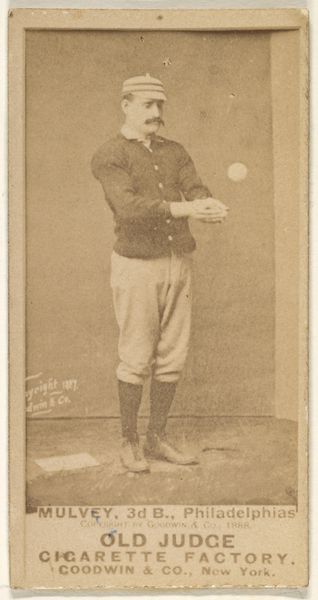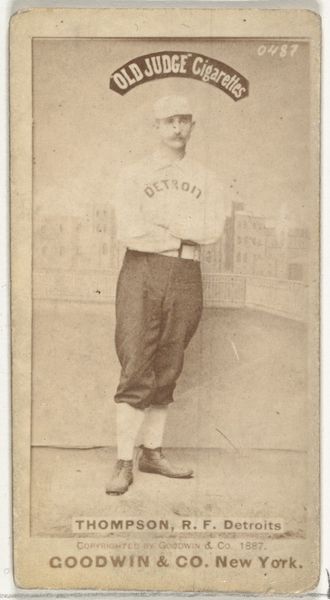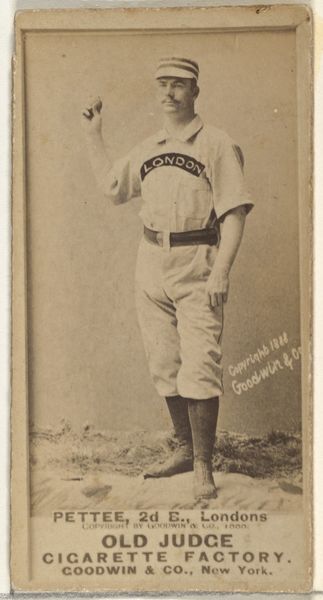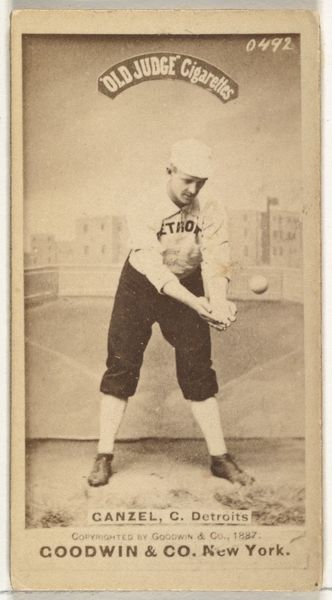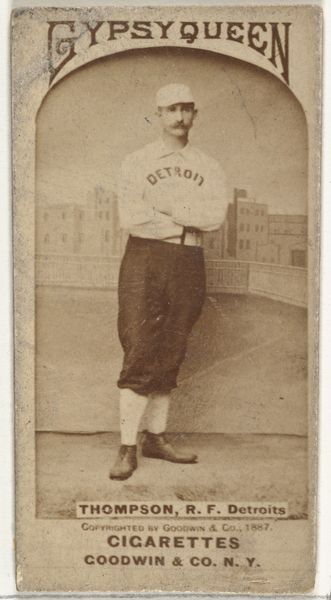
Charlie Getzein, Pitcher, Detroit, from the series Old Judge Cigarettes 1888
0:00
0:00
drawing, print, photography, gelatin-silver-print
#
portrait
#
drawing
#
still-life-photography
# print
#
impressionism
#
baseball
#
archive photography
#
photography
#
historical photography
#
gelatin-silver-print
Dimensions: sheet: 6 1/2 x 4 3/8 in. (16.5 x 11.1 cm)
Copyright: Public Domain
Curator: Here we have an 1888 gelatin silver print titled "Charlie Getzein, Pitcher, Detroit, from the series Old Judge Cigarettes", produced by Goodwin & Company. It’s currently part of the Metropolitan Museum of Art’s collection. Editor: It’s striking. The sepia tones give it such an antiquated feel. The pitcher is staring directly at the viewer in this stiff pose, as if posing for an official document of that era. I wonder about that direct gaze. Curator: Exactly. Consider this image in the context of late 19th century celebrity and marketing. Goodwin & Co. produced these baseball cards to be included in packs of cigarettes. This proto-sports memorabilia served to build brand awareness. Getzein, as a notable pitcher for the Detroit Wolverines, becomes a tool for the circulation of capital. Editor: And a complicated tool at that. Beyond simply a photograph, what kind of cultural meaning was attached to him in that role? These players embodied ideas about athleticism and even, dare I say, a sort of idealized masculinity? Was it limited by race, class, gender at the time? Curator: Absolutely. While the image attempts to capture Getzein's individuality through this supposedly candid, informal portrait, it also conforms to prevailing ideals of athleticism. Yet the commercial context can not be ignored; baseball's professionalization also saw the rise of marketing, with these cards reflecting and shaping early fan culture. Moreover, tobacco use held significantly different implications at the time, and these promotional strategies deeply impacted those with fewer socioeconomic means. Editor: So even as it captures a single person, a certain degree of universal aspirational maleness in a very specific era can't be divorced from how it would have functioned. Seeing him this way so divorced from his immediate sporting achievement lets me consider those wider questions a lot more clearly, which feels particularly salient even now. Curator: And that is precisely where it remains so resonant in historical collections. Thank you for those comments!
Comments
No comments
Be the first to comment and join the conversation on the ultimate creative platform.
